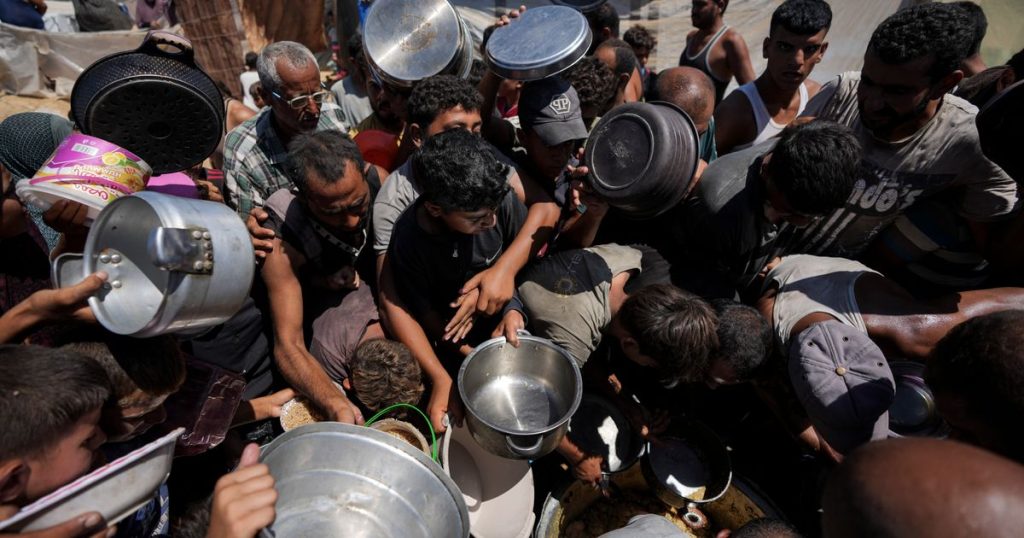Hunger and desperation were clear in a tent camp along the Deir al-Balah beachfront in Gaza, as thousands of Palestinians were forced into a “humanitarian zone” by Israeli military evacuation orders. The situation has grown increasingly dire as food and water supplies dwindle, with 84% of Gaza now within the evacuation zone and 90% of its population displaced. Thirteen evacuation orders have been issued in just over a month, significantly reducing the size of the humanitarian zone and pushing more Palestinians into overcrowded camps. The number of evacuees has increased so much that even those receiving aid are struggling to support newcomers.
The evacuations are said to be necessary due to Hamas launching rockets from within the humanitarian zone, prompting warnings from the Israeli military for Palestinians to flee immediately. The U.N. has reported nearly 250,000 people displaced in August alone, with evacuations occurring roughly every two days. The continuous movement is taking a toll on the displaced population, with many individuals having been uprooted multiple times, leading to exhaustion and financial strain. The tense environment is exacerbated by the scarcity of resources, as those in the camps struggle to access food, water, and basic necessities.
Water shortages have become another significant challenge in Deir al-Balah, with the U.N. reporting a 70% decrease in the water supply since the recent wave of evacuations began. This has led to outbreaks of skin diseases and other health issues, with the first confirmed case of polio in Gaza emerging in an infant paralyzed in the lower left leg. Aid groups are finding it increasingly difficult to offer assistance, as access to warehouses and facilities is hindered by evacuation orders. The dire situation has left many displaced individuals feeling hopeless and reliant on divine intervention for relief.
The impact of the evacuations is visible in satellite imagery, showing densely packed tent camps along the coast that have expanded and spread closer to the ocean. Even those residing in the humanitarian zone designated by Israel at the start of the conflict have been forced to relocate multiple times due to the shrinking borders imposed by military orders. International mediators are working to broker a cease-fire agreement between Israel and Hamas, amidst ongoing hostilities that have claimed thousands of lives and destroyed infrastructure in Gaza. The conflict, which began with Hamas militants crossing into Israel, has escalated into a humanitarian crisis that is testing the resilience of the displaced population.
As the crisis continues to unfold, the urgent need for humanitarian aid and assistance becomes increasingly evident. Displaced individuals, many of whom have lost their homes and livelihoods multiple times, are struggling to survive in overcrowded camps with limited access to essential resources. The emotional and physical toll of the conflict is exacerbated by the ongoing threat of violence and uncertainty about the future. International support and intervention are crucial to address the immediate needs of the displaced population and work towards a sustainable solution that ensures the safety and well-being of all those affected by the conflict in Gaza.


